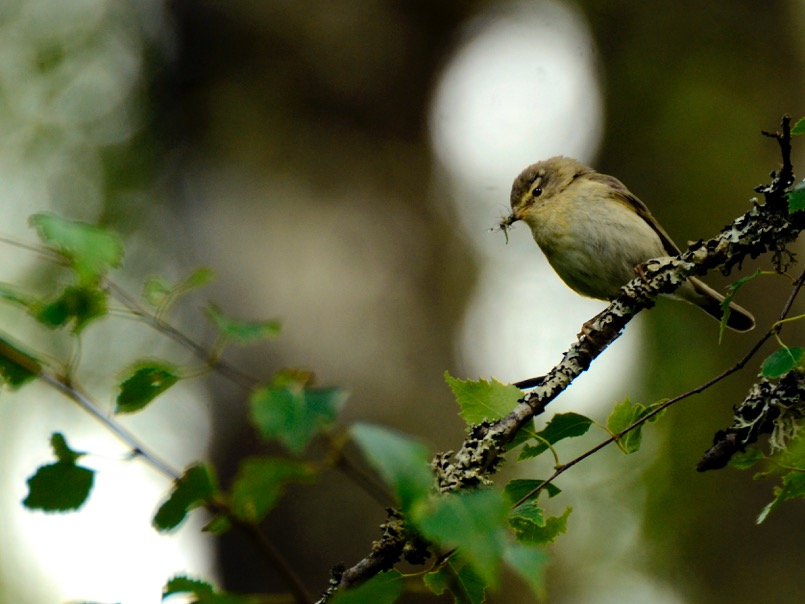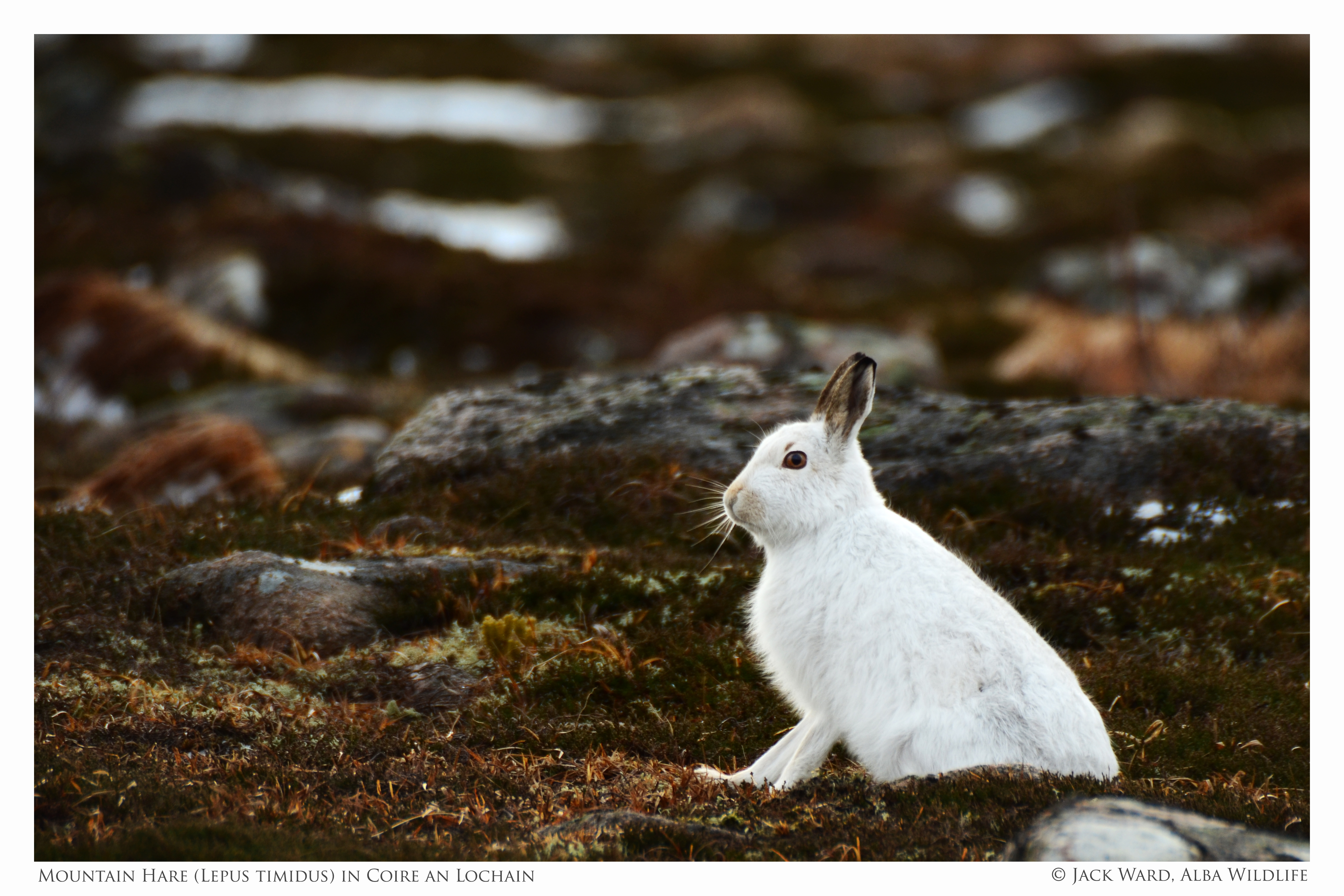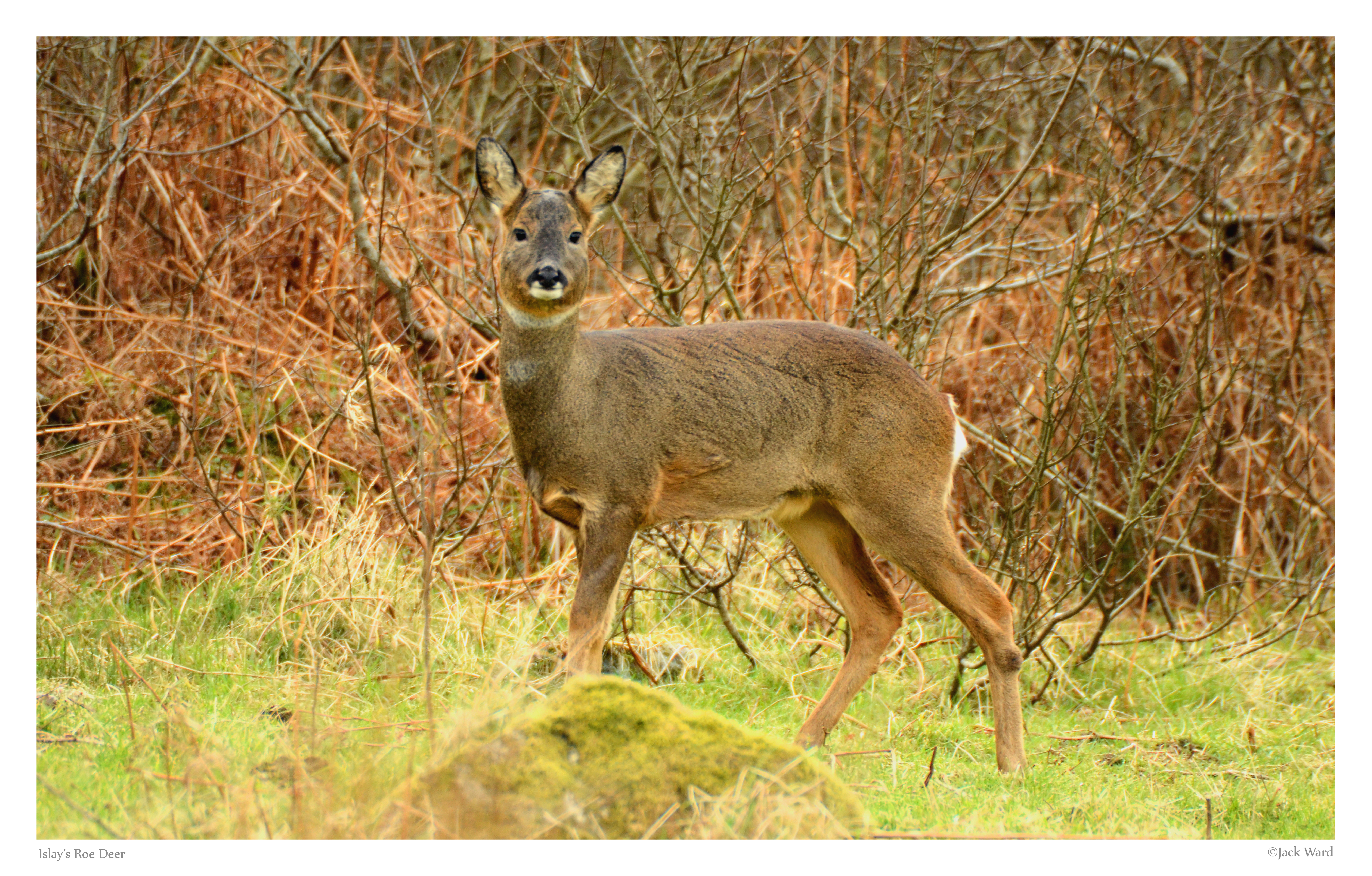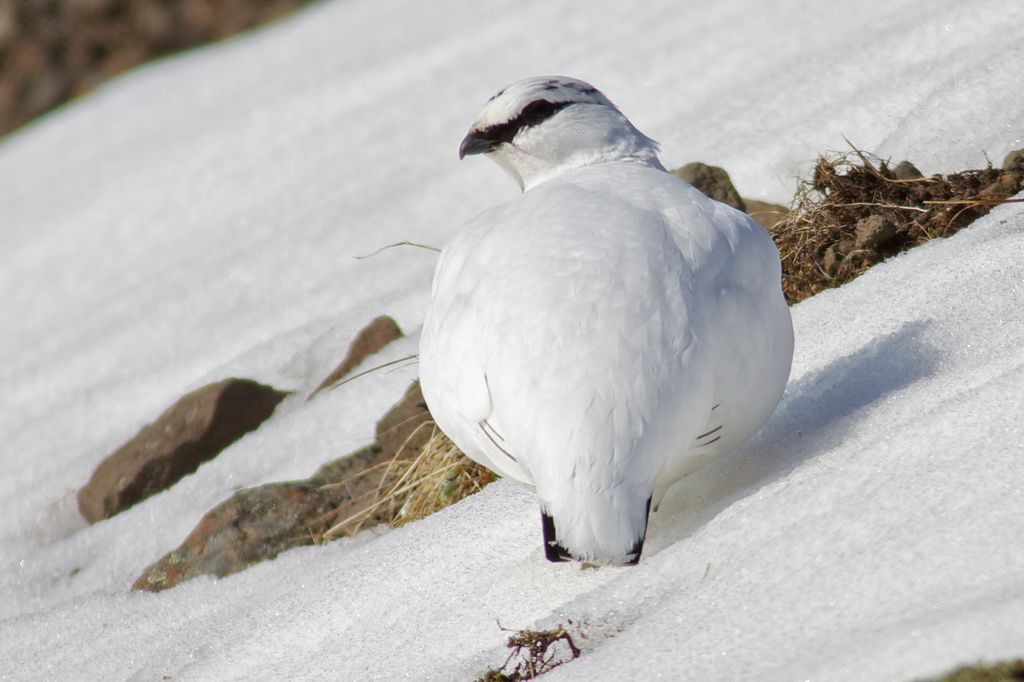So as most, if not all of you know, Glenmore where we are based and the surrounding area is rich in wildlife, and it is always a delight to see other creatures on our walks to the reindeer, as well as the reindeer themselves. It’s been such lovely weather recently and we have seen and heard a wide array of birds and other creatures recently, so I thought you might like to know what to look and listen out for on your trip up to the reindeer in the spring and summer.
The village of Glenmore is surrounded by Caledonian pine forests. Our bird table in the garden attracts lots of little songbirds, including chaffinches, great tits, blue tits, coal tits, siskins, green finches and even crested tits, which are usually quite shy and we take as a sign that snow may be on the way. We get ducks, pigeons and dunnocks on the ground around the table, tidying up after their small friends and we even get woodpeckers on the peanut holder occasionally. We often have red squirrels visit our bird table too, and one in particular at the moment who looks very scruffy and has a broken looking tail.

The path on our walk to the reindeer is lined by trees and there are many animals and birds which call the forest home. Most often seen are chaffinches, as they seem to be less shy than other birds. To borrow a phrase from Hen, the trees are “dripping in willow warblers”, which we always hear and sound familiar to chaffinches, but are more ‘flutey’. We also cross a river on the way to the enclosure which means we see birds associated with water. Just a few weeks ago we saw a dipper on the rocks, bobbing away looking for food. We also see grey wagtails, with their yellow bums, and pied wagtails too. Very lucky visitors can also get a glimpse of our ‘tame’ roe deer. Occasionally we see her just to the side of the path, or even in the car park. She doesn’t seem too bothered by us but we always try to keep quiet if she is around. The visitors get very excited that they’ve seen a deer even before getting to the enclosure!

Inside the enclosure, we encounter upland birds and often see red grouse, hearing them shout ‘go-back-go-back-go-back-go-back-go-back’ at us as they fly off. There are often curlews calling to each other, wood pigeon, crows, and cuckoos in the forests. If you’ve been on the visits, you’ll know that we are also plagued by ducks from Loch Morlich!

Ring ouzels, a migratory bird which breeds in the north of Scotland during summer, are often seen flying around too. They are fairly similar in size and shape to a blackbird, and look similar to them to except that they have a white collar on their chest. There are some black grouse too, but they are very shy and we only see them when we go up early in the morning. We have snipe in the enclosure, and I once almost stepped on a snipe nest when I was trekking last year!

We recently had some nesting wagtails in the shed in our hill enclosure. The fledglings were so cute and fluffy!

There are always a few roe deer in the enclosure and on our early morning jaunts to look for calving females we often hear them barking. We even seen red deer in the enclosure and Abby and Andi were super lucky to see an osprey flying over the enclosure. We have a few mountain hares running around and a couple of leverets always seem to be hanging around our shed area. We have toads, lizards, mice, weasels and lots and lots of midges too! And years ago Hen was walking along the boardwalk when she and a mole, of all things, passed each other – on the boardwalk!


Jack Ward’s fantastic photographs can be viewed at his Facebook page – Alba Wildlife
**Sidenote: Abby wanted me to call this blog “Oot and Aboot with Imogen” but I refused. This blogging business is much too serious for trivial blog titles, obviously.
Imogen





